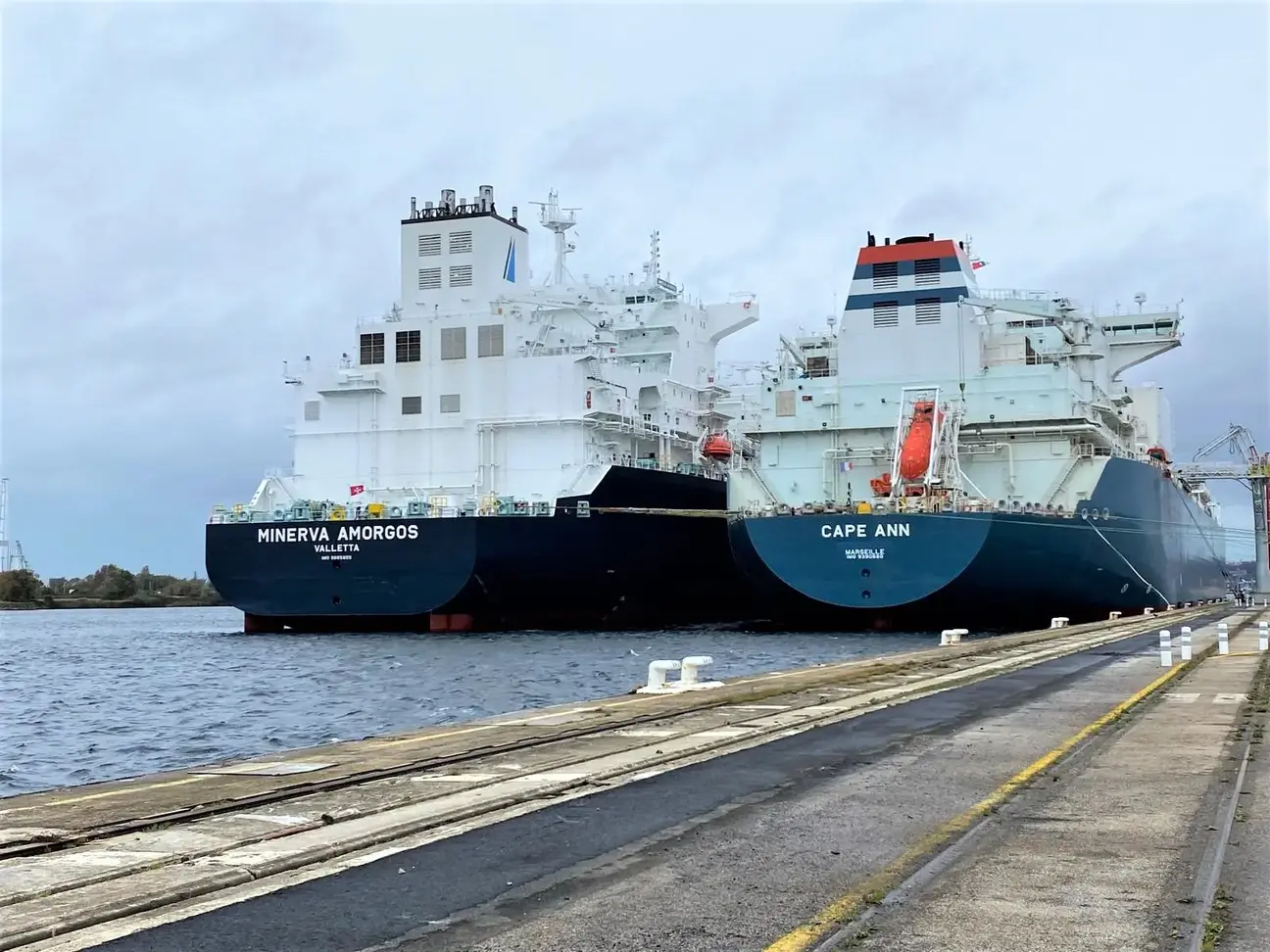
FSRU Description
Operation principle of an FSRU
An FSRU (Floating Storage and Regasification Unit) is a vessel equipped with :
- tanks for storing liquefied natural gas (LNG) at a temperature of -162°C;
- a system of cryogenic flexible pipes for transferring a cargo of LNG from an LNG carrier to the vessel's tanks;
- LNG regasification units, returning LNG into gaseous form by heating it (typically from -162°C to +10°C) and bringing it to sufficient pressure to inject it into the land transmission network ;
- a gas metering system ;
- a gas unloading arm connected to the onshore transmission network ;
The FSRU is a quick-to-implement, temporary and reversible device : it can be easily and quickly demobilized compared to onshore LNG terminals which require several years of development . There are currently about fifty-two FSRUs in the world.

Technical characteristics of the FSRU "Cape Ann"
The FSRU "Cape Ann" mobilized by TotalEnergies is moored at the Bougainville South wharf, in the port of Le Havre. Among three identified locations, the Bougainville site was selected following a study of the environmental, social and technological impacts of the project.
The vessel "Cape Ann", built in 2010, has the following features:
- 283 m long, 43 m wide and a draft of about 12 m
- a gross storage capacity of 145 000 m3 of LNG ;
- a regasification capacity of approximately 155 GWh/day;
The owner of the FSRU "Cape Ann" is HOEGH LNG, a Norwegian company with solid experience and recognized expertise in the operation of this type of vessel. HOEGH LNG operates a dozen of these vessels, representing about 20% of the global FSRU fleet.

The infrastructure for connecting the FSRU to the transmission network
The project required the installation of a reduced number of equipment on the dock:
- the mooring equipment of the FSRU and the LNG carrier ;
- a gas discharge arm under high pressure ;
- a short pipeline to reach the connection point to the transmission network operated by GRTgaz;
- a system of protection against the risk of overpressure;
- the necessary premises for shore-based personnel.
The National Natural Gas Transmission System
In order to connect the FSRU to the existing gaz transmission grid, GRTgaz built a 3.5 km pipeline. The laying of this pipeline involves the construction of a passage under the Grand Canal du Havre, carried out by micro-tunneller, over a distance of 650 meters.
GRTgaz installed and operates an interface station located near the FSRU, comprising:
- a gas heating and odorization unit;
- a gas pressure regulation and safety system.
Management of LNG carriers
The port configuration of Le Havre can accommodate the majority of the sizes of LNG carrier currently in service worldwide. LNG carriers with a capacity of between 138,000 and 180,000 m3 will be able to access the port to unload their cargo.
LNG carriers will be assisted, during their transit through the port, by tugs which will ensure their safe movement and berthing or departure operations. Similarly, they will be assisted by the sailors of the port of Le Havre who have a perfect knowledge command of the specificities of the port and in particular of the Francois 1st lock.

